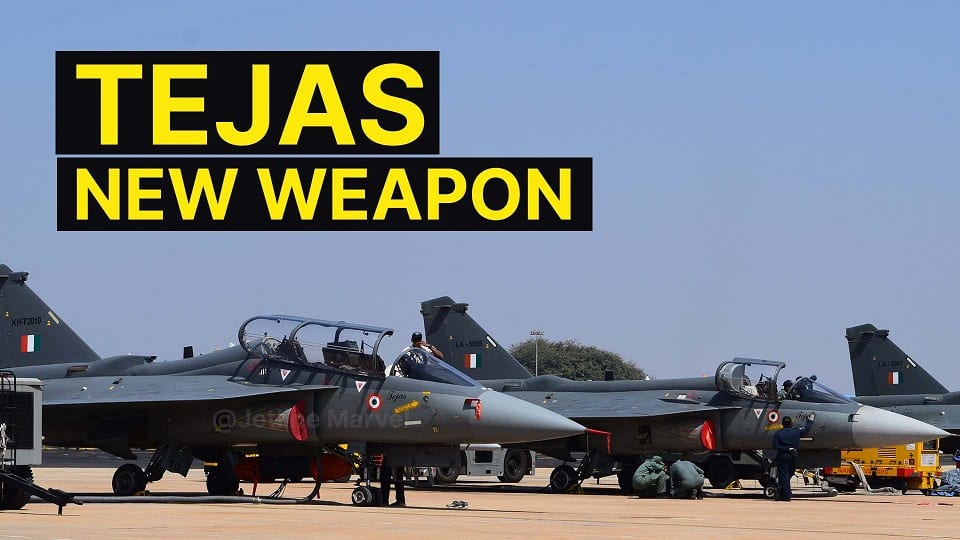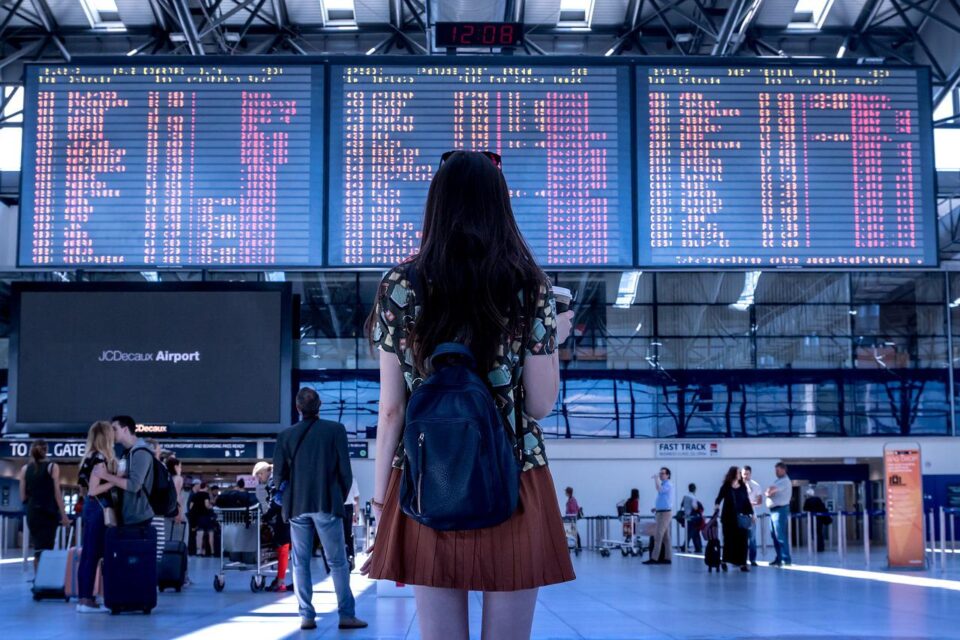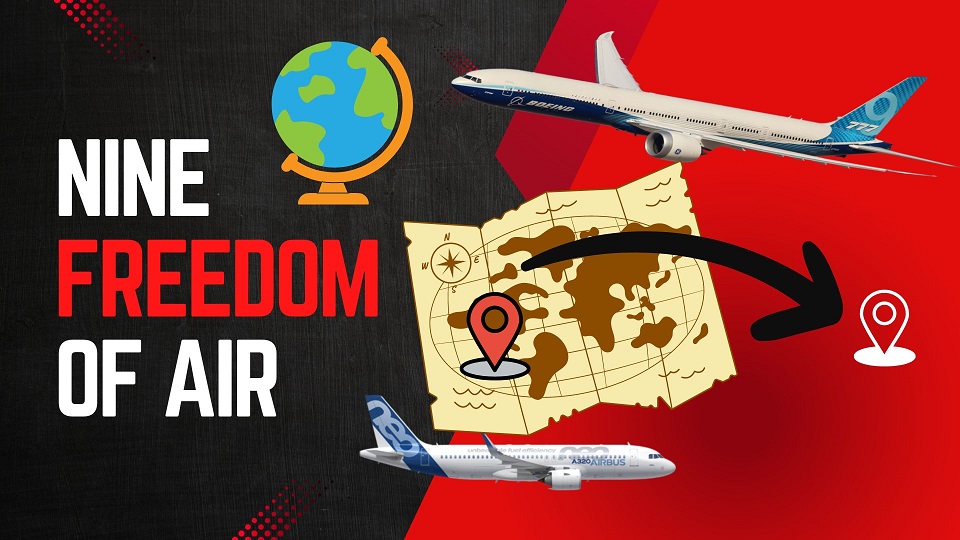Aviation
Indian LCA combat aircraft now being armed with American JDAM

Welcome back to Jetline Marvel for another interesting article. Do you know that the Tejas Aircraft is getting a more advanced guided bomb system?
It was recently established for testing a new system made in the United States, the JDAM kit. The Joint Direct Attack Munition is a guidance tail kit that converts unguided free-fall bombs into precision “smart” weapons that may be deployed in bad weather. By incorporating an inertial navigational system and a global positioning system guidance control unit into a redesigned tail piece, JDAM improves the accuracy of unguided, general-purpose bombs in any weather condition. The Joint Direct Attack Munition is a joint initiative of the United States Air Force and the United States Navy..
Since 1999. More than 450 JDAMs were dropped during this testing, recording an unprecedented 95 percent system reliability while achieving a 9.6 meter accuracy rate. JDAM performance has been demonstrated in operationally representative tests including drops through clouds, rain and snow. These tests included a B-2 releasing 80 JDAMs on a single pass against multiple targets.
So, how closely do the JDAM, SPICE, and HAMMER resemble each other?
In a technical sense, none of the three systems are bombs. It’s a set of kits that can be installed on current unguided bombs. Guidance units, fins, wings, and other components are bolted on to existing dumb bombs or even laser-guided bombs to transform them into guided, “glide” bombs that fly to their targets.
Lets understand the various weapons and capacities
Number one specification of Spice which is built by Rafael Advanced Defense system. It has Warhead of Mk 83 is 453 kg and Mk 84 is 907 kg. it can be guided by CCD or Infrared Homing with GPS . It can be carried by the F-15 , F16 and Mirage 2000 and Tejas aircraft.
The SPICE kit offers a range of 60km for 907kg bombs and 100km for 454kg bombs. A new SPICE variant, dubbed the SPICE 250, has also been developed, which is a 113kg weapon that can hit targets 100km away.
Number 2 specification of Hammer which is built in France by Safran Electronics & Defense.
The AASM HAMMER missile consists of a guidance kit and a range extension kit. The kits are fitted with Mk82 warheads including Smart Bomb Unit SBU-38, 64 and 54. The easy to use missile supports operations with 125kg, 250kg, 500kg and 1,000kg bomb bodies, and can be reprogrammed during the flight.
Thales and Diehl join Airbus to develop flight control computers for CityAirbus NextGen
The basic version SBU-38 HAMMER is provided with hybrid INS/GPS guidance, while the SBU-54 version is equipped with INS/GPS/IR infrared guidance. The latest version SBU-64 uses INS/GPS/laser guidance.
The propulsion system is fitted at the rear of the missile and consists of a solid rocket motor and four winglets for flight control.
The Joint Direct Attack Munition (JDAM) is a guidance kit that converts unguided bombs, or “dumb bombs”, into all-weather precision-guided munitions. JDAM-equipped bombs are guided by an integrated inertial guidance system coupled to a Global Positioning System (GPS) receiver, giving them a published range of up to 15 nautical miles (28 km). JDAM-equipped bombs range from 500 pounds (230 kg) to 2,000 pounds (910 kg).
Airbus’ C295 Flight Test Bed 2 takes to the skies for the first time.
Hammer price : US$210,707 per unit
JDAM price : $25,000 per unit
Spice Price : US $397,000 per unit.
The JDAM was meant to improve upon laser-guided bomb and imaging infrared technology, which can be hindered by bad ground and weather conditions. Laser seekers are now being fitted to some JDAM’s.
The 20 Safest Airlines in the World 2021
Tejas Mark 1 and 2 already has the Spice form the Rafale and Hammer From Safran both are highly versatile. as per the report the Hammer is 7 times more cost then the JDAM that means US$210,707 per unit. and as per the recent order by India was cost of around $397,000 per kit for safran built Spice bomb kit.

Airlines
US DOT says Airlines must now pay automatic refunds for cancelled flights

The U.S. Department of Transportation (DOT) has released a final regulation requiring airlines to quickly reimburse passengers with automatic cash refunds when owed, according to a statement made by the Biden-Harris Administration.
Under the new regulation, passengers will find it easier to get refunds when airlines dramatically alter or cancel flights, cause severe delays for checked baggage, or don’t supply the additional services they paid for.
According to a statement from the Biden-Harris Administration, the U.S. Department of Transportation (DOT) has published a final rule mandating airlines to promptly compensate customers with automatic cash refunds when they are eligible. The new rule would make it simpler for customers to receive refunds from airlines in cases when they drastically change or cancel flights, cause significant delays for checked luggage, or fail to provide the extra services they charged for.
Under the latest rule from the USDOT, passengers are guaranteed refunds in several scenarios:
- Canceled or Significantly Changed Flights: Passengers are entitled to refunds if their flight is canceled or significantly altered, including changes in departure or arrival times exceeding 3 hours domestically or 6 hours internationally, departures or arrivals from different airports, increased connections, downgrades in service class, or changes less accommodating to passengers with disabilities.
- Delayed Baggage Return: Passengers filing mishandled baggage reports can claim a refund for checked bag fees if their luggage is not returned within specific timeframes after flight arrival.
- Unprovided Extra Services: If airlines fail to deliver paid extra services like Wi-Fi, seat selection, or inflight entertainment, passengers can request refunds for those fees.
The final rule streamlines the refund process, ensuring it is:
- Automatic: Refunds are issued automatically without requiring passengers to request them.
- Prompt: Airlines must refund credit card purchases within seven business days and other payment methods within 20 calendar days.
- In Original Form of Payment: Refunds are provided in the original payment method used for purchase.
- Full Amount: Passengers receive full refunds minus the value of any portion of transportation already used, including government and airline fees.
Suggest banning family seating junk fees and ensuring that parents can travel with their kids at no additional cost. No airline promised to ensure fee-free family seating prior to efforts from President Biden and Secretary Buttigieg last year. Family seating is now guaranteed free of charge on four airlines, and the Department is working on a plan to eliminate family seating junk fees.
Propose to make passenger compensation and amenities mandatory so that travelers are taken care of when airlines cause flight delays or cancellations.
Airlines
The Nine Freedoms of the Air – Jetline Marvel

Most of us travel from one city to another city via road we need to get permission to that specific city if it is in another country like a visa or Road access permission to use its property for revenue purposes to carry passengers and Cargo. Similarly, In the airline Industry, it is also important that the Company have permission to fly and access that country whether it’s for stoppage flying above them, or Operating the passengers within that country This is called Freedom of the Air.
Some countries together they agree with certain conditions to access their Aerospace for to access for the airline to travel above their nation. If the bilateral is done for Their own countries’ airlines or other countries’ airlines. In this chapter, we understand how this thing is carried out. What all the condition has to look into that.
The Freedoms of the Air are international commercial aviation agreements (traffic rights) that grant a country’s airline(s) the privilege to enter and land in another country’s airspace. They were formulated in 1944 at an international gathering held in Chicago (known as the Chicago Convention) to establish uniformity in world air commerce. There are generally considered to be nine freedoms of the air.
Most nations of the world exchange first and second freedoms through the International Air Services Transit Agreement. The other freedoms,chase freedom airline miles when available, are usually established between countries in bilateral or multilateral air services agreements. The third and fourth freedoms are always granted together. The eighth and ninth freedoms (cabotage) have been exchanged only in limited instances
First Freedom:
The basic permission granted to an airline from one country (A) to fly through the airspace of another country (B)
Second Freedom:
The permission for a commercial airplane from country (A) to land and refuel (often called a technical stop) in another country (B).
Third Freedom :
The privilege for an airline to transport paying (Revenue) passengers from its home country (A) to another country (B).
Fourth Freedom
The rights for an airline to transport paying (Revenue )passengers from another country (B) to the airline’s home country (A).
Fifth Freedom
Fifth Freedom (also known as beyond rights): The rights for an airline to transport passengers from its home country (A) to a destination (B), then pick up and carry passengers to other international destinations (C).
Sixth Freedom:
Sixth Freedom (Combination of Third & Fourth Freedoms) The right for an airline to carry passengers or cargo between two foreign countries (B and C), provided the aircraft touches down in the airline’s home country (A).
Seventh Freedom:
The authorization for an airline to operate flights that start in a foreign country (B), skip its home country (A), and transport passengers to another international destination (C).
Eighth Freedom Air
The rights for an airline to transport passengers from one location within a country’s territory (B) to another point within the same country on a flight originating in the airline’s home country (A). This right is commonly referred to as cabotage and is notably scarce outside of Europe.
Ninth Freedom Air
The entitlement for an airline from a specific country (A) to begin a flight in a foreign country (B) and transport passengers from one location to another within that foreign country. This concept, also referred to as stand-alone cabotage, distinguishes itself from the traditional aviation definition of cabotage by not directly involving the airline’s home country.
Aviation
Air India’s B747 Makes Its Final Journey, Waving Farewell to Fans

In a poignant moment marking the end of an era in aviation history, Air India’s iconic Boeing 747 aircraft, affectionately known as the ‘Queen of the Skies,’ embarked on its ultimate journey from Mumbai’s international airport.
The departure, bound for Plainfield, USA, where it will undergo dismantling and part-stripping under the ownership of American AerSale, signals the closure of a storied chapter for the airline.
Once revered for transporting dignitaries ranging from prime ministers to presidents, the Boeing 747 has etched itself into aviation lore. Yet, as airlines worldwide pivot towards more contemporary and cost-effective aircraft, Air India’s decision to bid farewell to its remaining Boeing 747s reflects the pragmatic realities of today’s aviation landscape.
The sale of these majestic planes to AerSale represents a strategic move by Tata Group, Air India’s new custodian, towards optimizing operational efficiency and embracing modern industry standards. Out of the four aircraft sold, two will be repurposed into freighters, while the remaining pair will be meticulously disassembled to salvage valuable components.
The final flight from Mumbai witnessed a touching tribute as pilots performed a traditional ‘Wing Wave,’ symbolizing the conclusion of the Boeing 747‘s distinguished service with Air India. This poignant gesture encapsulates the deep sentiment attached to the aircraft’s departure and its significant contribution to the airline’s legacy.
As the Boeing 747 embarks on its journey to Plainfield, USA, nostalgia permeates the air, evoking memories of its maiden flight on March 22, 1971. Over five decades, Air India operated a total of 25 Boeing 747s, each leaving an indelible mark on the annals of aviation history.






























